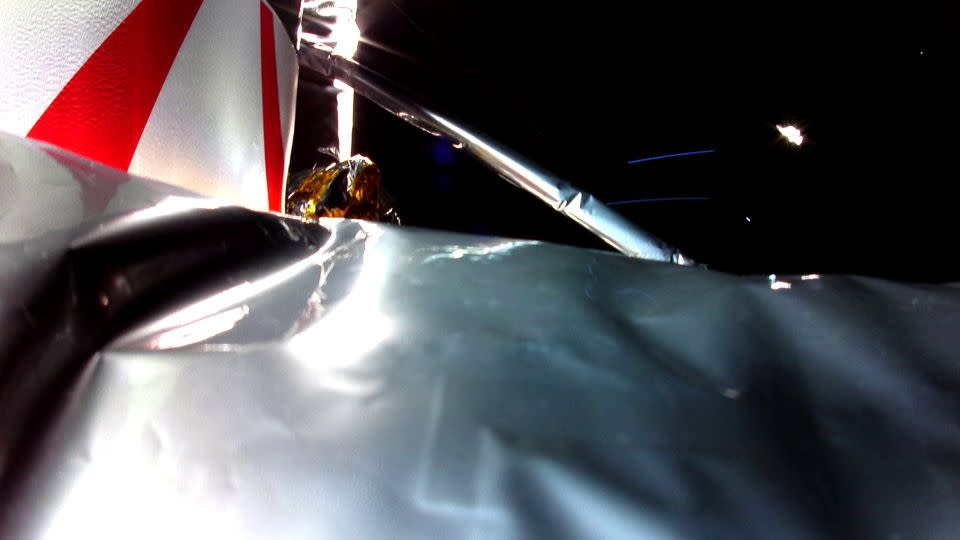Astrobotic Technology, which developed the first lunar lander to be launched from the United States in fifty years, said it abandoned its attempt to place the Peregrine spacecraft on the moon less than 24 hours after the vehicle took flight.
According to the company, the spacecraft suffered “critical” fuel loss due to a fuel leak.
Just hours after the rover launched toward the moon from Florida on Monday morning, Astrobotic announced that the mission was in danger. According to Astrobotic, the lunar lander, called Peregrine, was unable to position itself facing the sun, possibly due to a thrust issue. This reverse orientation prevented the spacecraft from charging its batteries.
The battery issue was later resolved, but Astrobotic was unable to fix the apparent problem with the Peregrine lander’s propulsion system.
In a statement late Monday evening, the company said the fuel leak caused the thrusters of the Peregrine lander’s attitude control system – designed to precisely align the 6-foot box-shaped lander while in space – “to be forced to work poorly.” beyond expected service life cycles to protect the lander from an uncontrolled rollover.
Astrobotic added that the thrusters will likely be able to operate for another 40 hours at most.
According to the company, “The goal at this time is to get Peregrine as close to the lunar distance as possible before it loses its ability to maintain its sun-pointing position and subsequently loses its power.”
This means a potential moon landing, planned for February 23, is now off the table.
Astrobotic had warned just after 1pm ET that a “fault in the propulsion system” had drained the vehicle of fuel. But the company worked for hours on Monday to stabilize the issue and evaluate options.
At some point Monday afternoon, Astrobotic also shared the first image of the Peregrine lander in space. The photo showed that the vehicle’s outer insulation layers were wrinkled.

In a post on social media platform
From launch to lunar orbit
The world’s fastest bird The lunar lander, dubbed Peregrine, appeared to have completed the first leg of its journey completely successfully after taking off at 2:18 a.m. ET atop a Vulcan Centaur rocket developed by Lockheed Martin and Boeing venture United Launch. Alliance.
This was the first flight of the Vulcan Centaur rocket, a new vehicle that ULA designed to replace its older series of rockets.
Just after 3 a.m., the company confirmed that Vulcan Centaur had performed as expected and had inserted the Peregrine lunar lander into translunar injection orbit, according to ULA. This involves a precisely timed engine burn that propels the Peregrine lander onto a path that will allow it to orbit Earth and synchronize with the moon, which is about 384,400 kilometers (238,855 miles) away.
The Peregrine lander was then expected to fire its own thrusters and perform three maneuvers to pinpoint its path.
Astrobotic said in a statement that Peregrine successfully began communicating with NASA’s Deep Space Network, activated its avionics systems, and “thermal, propulsion, and power controllers were all on and operating as expected.”
“Following successful activation of the propulsion systems, Peregrine entered a safe operational state,” the company said.
But after this, the Peregrine lander experienced an “anomaly” that caused the craft to be pointed away from the sun and its battery unable to charge.
Mission controllers then “developed and executed an improvised maneuver to reorient the solar panels toward the Sun,” according to Astrobotic.
They achieved this goal.
“The team’s improvised maneuver was successful in reorienting Peregrine’s solar array towards the Sun. We are now charging the battery,” the company said in an update posted at 12:34 ET.
Still, Astrobotic said it needed to fix the underlying propulsion issue. In order for the spacecraft to make a soft landing on the moon, it will need to use onboard thrusters and have sufficient propulsion.
Risks of the Peregrine mission
Pittsburgh-based company Astrobotic Technology developed Peregrine under a $108 million contract with NASA. The vehicle was designed from the beginning to be relatively inexpensive; It aimed to realize NASA’s vision of lowering the cost of robotic moon landings by asking the private sector to compete for such contracts.
Astrobotic CEO John Thornton told CNN on January 2 that he viewed this first launch as a test mission.
“It’s really a 50-50 shots on goal type of approach, where it’s less about a specific mission and more about the success of the industry,” Thornton said.
“Every success and failure are opportunities to learn and grow,” Joel Kearns, deputy administrator for exploration at NASA’s Science Mission Directorate, said in a statement Monday. We will use it.”
Thornton, who previously said that this Peregrine mission cost Astrobotic more money than it earned, also stated to CNN what it would mean for the company if this mission failed.
“It will definitely have some impact on our relationships and our ability to take on additional roles in the future,” Thornton said. “This certainly won’t be the end of it, but it will certainly be challenging.”
Abandoning the Moon landing attempt would mean a huge loss not only for Astrobotic, but also for NASA and the other countries and institutions that carry payloads for the Peregrine lander.
The company will not be able to test the landing maneuver, which has proven to be an extremely difficult step in the journey in previous lunar landing attempts conducted by various countries and companies.
The Peregrine vehicle carries five scientific instruments from NASA and 15 other payloads from various organizations and countries. Commercial payloads on the lander include souvenirs and even human remains that customers pay to ship to the lunar surface.
For more CNN news and newsletters, create an account at CNN.com